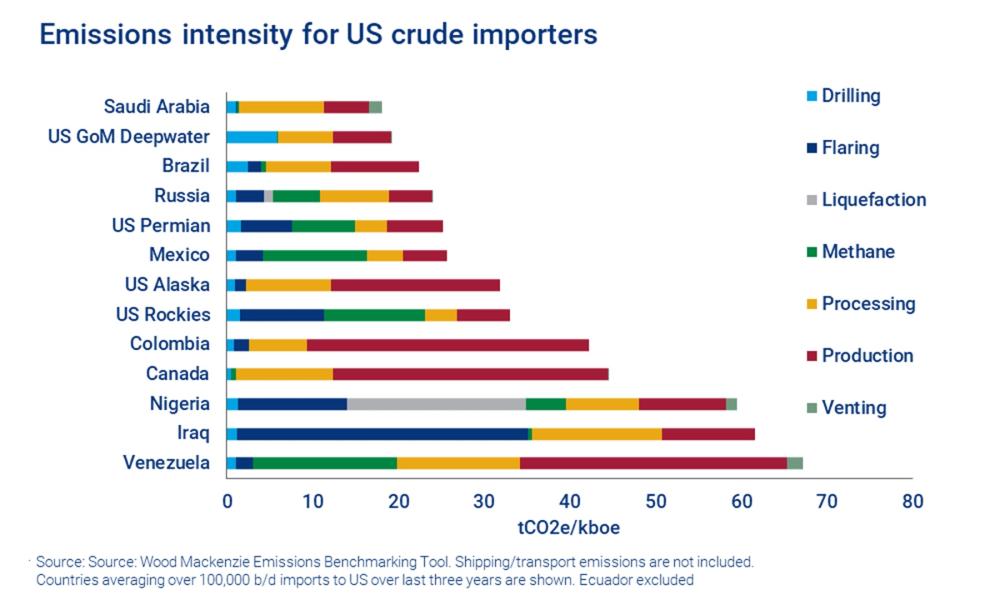Exxon Mobil Corp.’s nearly $60 billion move to strengthen its shale portfolio with the acquisition of Permian Basin pure-play Pioneer Natural Resources signals more oil and gas production on the horizon.
However, investors and others concerned about Big Oil getting bigger amid global net-zero ambitions shouldn’t necessarily fret.
“More assets in fewer hands should create more profitability, and bigger companies just empirically are more focused on carbon intensity, lowering carbon footprint, achieving net zero,” Dan Pickering, founder and chief investment officer of Pickering Energy Partners told Hart Energy. “Folks may be scared of consolidation, but the reality is: the buyers, the bigger they get, the more sort of ESG conscious they become, the more actions they take and the more cash flow they have to try and make a difference and invest in low carbon solutions.”
The acquisition announced Oct. 11, if approved by regulators, would bring together Pioneer’s 856,000 net acre position in the Midland Basin and Exxon’s 570,000 net acre position in the Delaware and Midland basins. Exxon’s production in the Permian is expected to more than double, reaching 1.3 Mboe/d based on 2023 volumes.
The merge with the Midland Basin’s largest oil producer comes as energy companies work to lower emissions while meeting the world’s energy needs and maintaining focus on returns. Like some of its peers, Exxon aims to achieve net-zero Scope 1 and Scope 2 emissions from its operated assets by 2050. The company’s plan includes targeting what it calls the $6 trillion molecules market, consisting of carbon capture and storage (CCS), hydrogen and biofuels.
The planned acquisition evoked outcries from climate groups. Richard Wiles, president of the Center for Climate Integrity, accused Exxon Mobil of lying to the public and policymakers about its commitment to climate solutions, saying “Big Oil companies are driving the world toward climate catastrophe.”
However, “we haven’t heard much from climate concerned investors on the deal,” Michael Schwartz, an energy equity research associate for Jefferies, told Hart. “XOM will accelerate the timeline for PXD reaching net zero and deploy its leading technology to cut methane emissions.”
All of the above
Speaking during an Oct. 11 webcast following the announcement, Exxon Mobil CEO Darren Woods said the company will accelerate Pioneer’s net-zero emissions commitment by 15 years, moving the target to 2035 from 2050.
“As we have said many times, we are working to solve the ‘and’ equation, providing the energy and products society needs and reducing emissions, both ours and others,” Woods said.
Plans include reducing energy requirements, electrifying operations, reducing methane emissions using Exxon’s technologies and using renewable electricity where available.
Pioneer already tapped into the renewables market, announcing nearly a year ago its participation in two renewable energy projects with a subsidiary of NextEra Energy Resources. The projects include developing a 140-megawatt (MW) wind generation facility on Pioneer acreage in Midland County. Pioneer said it’s also part of the 160-MW Concho Valley Solar project. The company is working with Targa Resources Corp. on both.
Exxon also plans to utilize Pioneer’s water recycling expertise.
“Pioneer’s water recycling infrastructure is impressive, and we plan to leverage this expertise to further address our water usage in this water-scarce region,” Woods said. “We expect to increase the amount of recycled water used in our combined Permian fracturing operations to more than 90% by 2030.”
The merger, which followed Exxon’s $4.9 billion acquisition of CCUS and EOR specialist Denbury Inc., is also expected to strengthen Exxon Mobil’s Low Carbon Solutions business, including boosting feedstock for its low-carbon hydrogen and ammonia facilities in Baytown, Texas.
Exxon Mobil is building in Baytown what could become the world’s largest low-carbon hydrogen plant when it starts up by 2028—producing about 1 Bcf/d of hydrogen. Exxon aims to capture more than 98% of the associated CO2 and store it underground. The plant’s CCS projects could store up to 10 million metric tonnes (MMmt) per year of CO2.
The company is also part of the Gulf Coast’s HyVelocity H2Hub in Texas, which was named one of seven hubs selected for a share of the $7 billion awarded by the Biden administration for nationwide hydrogen hubs.
With the additional feedstock for hydrogen and ammonia, plus putting EOR onto Pioneer’s West Texas assets, Pickering said the deal allows Exxon to be an even more integrated player.
“It definitely gives them scale in a business where scale should be important,” he said.
Schwartz added, “the deal shows XOM still sees a long runway for oil going forward, but CEO Darren Woods noted that he doesn’t see it as a bullish call on oil but instead a bullish call on XOM’s people and technology, which ties to the enhanced recovery synergies.”
Lower carbon intensity
Though the deal may be seen by some climate activists as “the bad guy getting bigger,” reality is the barrels produced in the U.S. and the Permian in particular have lower carbon intensity than those produced in some other countries, Pickering said.
“So, if Exxon’s going to get bigger, then getting bigger in the U.S. is absolutely a positive relative to other places around the world where the carbon intensity of those barrels is higher.”

Still, changing behaviors when it comes to energy consumption won’t be easy, so finding ways to manage carbon—whether its via CCS or using it—will be essential. Profitability is a must as well.
Lower-carbon initiatives cost more and have lower returns today, given where they are on the technology lifecycle, according to Pickering, who noted such initiatives are the future of energy.
“It’s the 2030s and ‘40s, not the 2020s,” he said. “The good news here, I think, is that Exxon has and most of the big oil companies have a big enough business and a long enough vision, if you will, that they’re willing to do both.”
The Exxon-Pioneer deal is expected to close in early 2024, as the number of Permian players shrink amid a consolidation wave.
Other recent deals have included Civitas Resources’ Oct. 4 acquisition of Vencer Energy in a $2.1 billion deal, which built on Civitas’ $4.7 billion in M&A activity, and Permian Resources Corp.’s $4.5 billion acquisition of Earthstone Energy Inc.
Earlier this year, Chevron Corp. also agreed to acquire PDC Energy Inc. in a transaction valued at $6.3 billion, adding to the supermajor’s position in the Denver-Julesburg and Permian basins.
“Consolidation is going to translate to probably more intensive efforts around low carbon as opposed to less,” Pickering said. “So, they may be getting bigger in oil and gas, but they’re also going to be getting lots bigger in low carbon solutions area.”
Recommended Reading
E&P Highlights: March 10, 2025
2025-03-10 - Here’s a roundup of the latest E&P headlines, from a new discovery by Equinor to several new technology announcements.
E&P Highlights: March 17, 2025
2025-03-17 - Here’s a roundup of the latest E&P headlines, from Shell’s divestment to refocus its Nigeria strategy to a new sustainability designation for Exxon Mobil’s first FPSO off Guyana.
E&P Highlights: Jan. 21, 2025
2025-01-21 - Here’s a roundup of the latest E&P headlines, with Flowserve getting a contract from ADNOC and a couple of offshore oil and gas discoveries.
E&P Highlights: Jan. 27, 2025
2025-01-27 - Here’s a roundup of the latest E&P headlines including new drilling in the eastern Mediterranean and new contracts in Australia.
E&P Highlights: Feb. 10, 2025
2025-02-10 - Here’s a roundup of the latest E&P headlines, from a Beetaloo well stimulated in Australia to new oil production in China.
Comments
Add new comment
This conversation is moderated according to Hart Energy community rules. Please read the rules before joining the discussion. If you’re experiencing any technical problems, please contact our customer care team.





